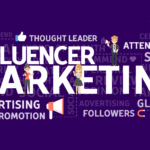Introduction: Why Knowing Your Ideal Customer Is the Key to Growth
No matter how innovative your product or service is, it won’t succeed unless it’s marketed to the right people. This is where identifying your ideal customer becomes crucial. Many businesses waste time and money marketing to a broad audience, hoping something sticks. But modern marketing success depends on precision—understanding who your best customer is, what they want, and how to reach them.
This article walks you through the steps to identify and target your ideal customer so you can improve your messaging, boost conversions, and scale more effectively.
Step 1: Understand the Importance of Your Ideal Customer
Your ideal customer is someone who finds the most value in your product or service, buys from you consistently, and becomes a loyal advocate. They are not just a buyer—they are your brand’s biggest asset. Identifying them helps you:
- Create more relevant content
- Optimize marketing spend
- Build customer loyalty
- Increase overall profitability
Without this clarity, your marketing can become too generic and ineffective. The deeper you understand your customer, the better you can serve them—and ultimately, grow your business.
Step 2: Gather Demographic and Psychographic Data
To find your ideal customer, start by collecting both demographic and psychographic data.
- Demographic data includes: age, gender, income, education, location, marital status, job title, and more.
- Psychographic data dives into their lifestyle, interests, values, opinions, buying habits, and emotional triggers.
You can gather this data through tools like:
- Google Analytics
- Customer surveys
- Social media insights
- CRM systems
- Direct interviews
The goal is to create a comprehensive picture of who your top customers are and what motivates them to engage with your brand.
Step 3: Create Detailed Buyer Personas
A buyer persona is a semi-fictional representation of your ideal customer based on real data and research. It helps you humanize your marketing approach and make more informed decisions.
Each buyer persona should include:
- Name and short bio
- Age range and occupation
- Key goals and challenges
- Preferred social platforms
- Purchase behavior
- Common objections or fears
- Motivators and buying triggers
For example, “Marketing Mary” might be a 34-year-old digital marketer looking for automation tools to save time, who spends a lot of time on LinkedIn and prefers free trials before committing.
Step 4: Analyze Your Existing Customers
If you already have customers, analyze who your top performers are—those who buy often, spend more, and refer others. Look for patterns such as:
- Industries they belong to
- Job roles or income levels
- Types of content they engage with
- Time of day/week they interact with your brand
- How they discovered your business
You can even group them by Customer Lifetime Value (CLV) to identify which segments bring in the most revenue over time.
This analysis helps you find lookalike audiences—people who share traits with your best customers but haven’t discovered your brand yet.
Step 5: Segment Your Audience
Audience segmentation allows you to divide your market into specific groups that share common traits. This enables you to tailor your messaging and offers for each segment.
Common ways to segment:
- Behavior (purchase history, site visits)
- Location (city, region, country)
- Device (mobile vs desktop users)
- Interests (product preferences)
- Engagement level (active vs lapsed customers)
The more targeted your messaging, the higher your chances of converting that group. Tools like Facebook Ads Manager and email platforms such as Mailchimp make segmentation easy and powerful.
Step 6: Monitor Customer Feedback and Behavior
Beyond data, the voice of your customer tells you why they buy, what they like, and what they dislike. Listen actively to:
- Reviews and testimonials
- Customer service queries
- Social media comments
- Product return reasons
- Live chat transcripts
These insights can reveal new pain points or desires that may not show up in analytics tools. Pay attention to recurring language—they’re literal clues to how your audience thinks and feels.
By aligning your messaging with these real-world sentiments, you increase relatability and trust.
Step 7: Align Your Marketing Channels with Customer Preferences
Once you know who your ideal customer is and how they think, you need to figure out where they hang out online and how they prefer to engage.
Are they professionals who spend time on LinkedIn? Are they Gen Z users who favor TikTok and Instagram? Or are they email-driven decision-makers?
Choose marketing channels based on where your ideal customers are most active and likely to convert. Don’t try to be everywhere—be where your customer is.
Step 8: Test, Refine, and Evolve Your Strategy
Your ideal customer profile is not static. As your business grows or trends change, your target audience may evolve too. That’s why continuous testing and adaptation are crucial.
What to test:
- Ad copy and creatives
- CTA (call-to-action) language
- Email subject lines
- Target segments in paid ads
- Website landing page formats
Use A/B testing and analytics to understand what’s working and what’s not. Based on these insights, refine your buyer personas and segmentation regularly.
This iterative approach ensures you stay aligned with your audience’s changing behaviors and expectations.
Conclusion: Precision Marketing Starts with Customer Clarity
In a crowded marketplace, knowing exactly who your ideal customer is can set your brand apart. It gives you a roadmap for smarter campaigns, more efficient use of resources, and stronger customer relationships. From creating detailed buyer personas to testing messages that resonate, every step you take toward understanding your customer helps boost ROI and long-term loyalty.
Remember: the clearer you are about who you’re talking to, the clearer your message becomes—and that clarity converts.






